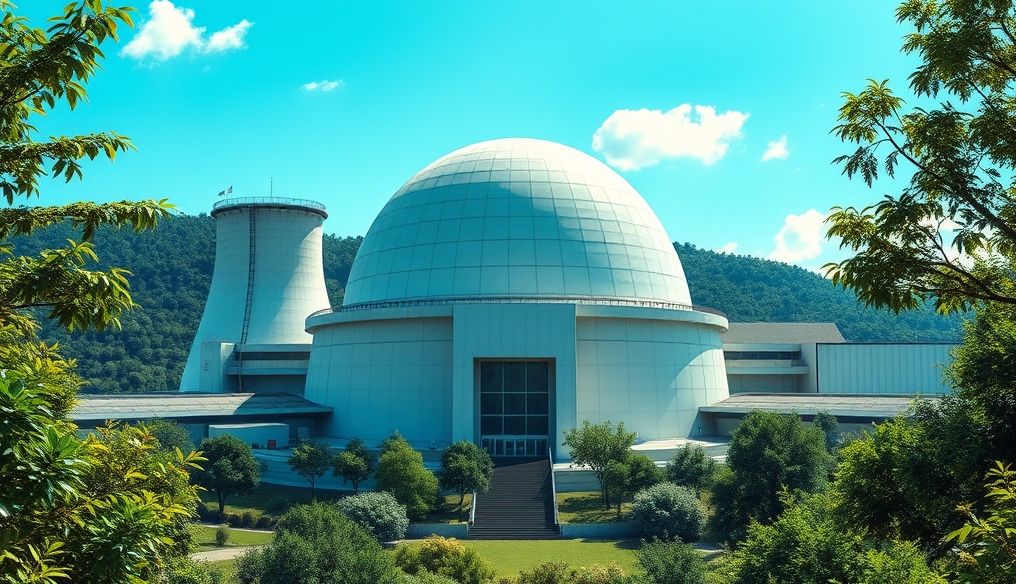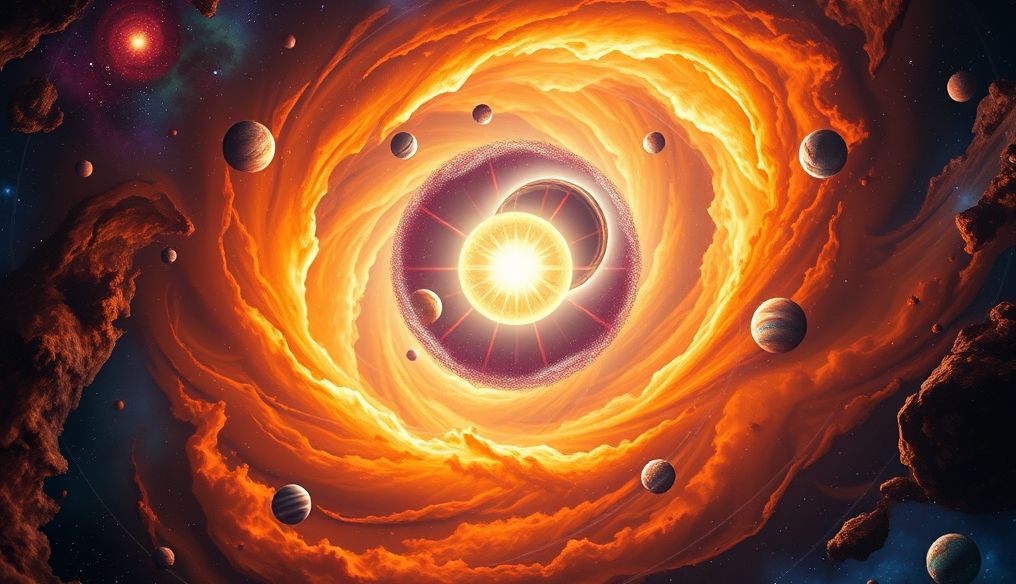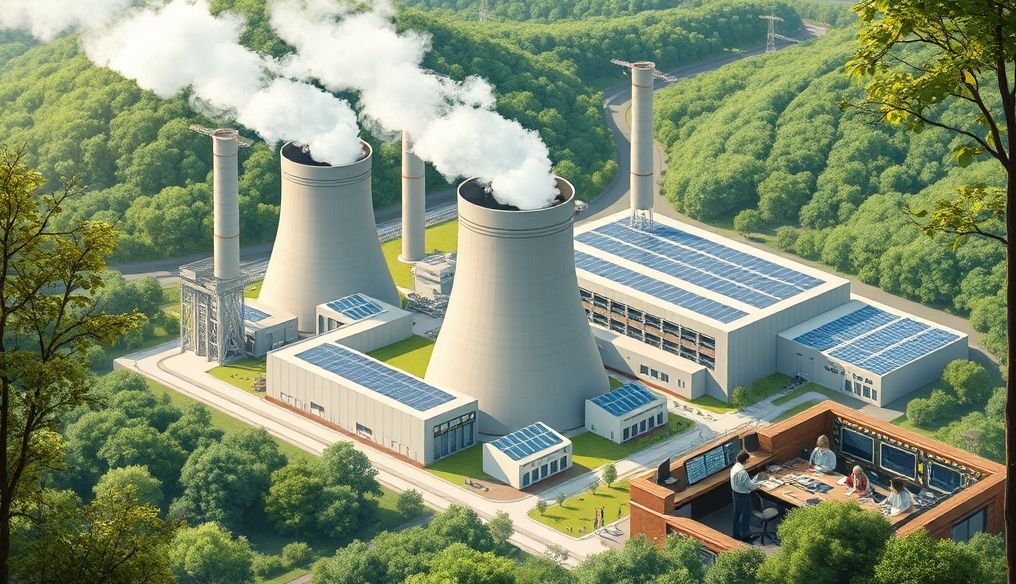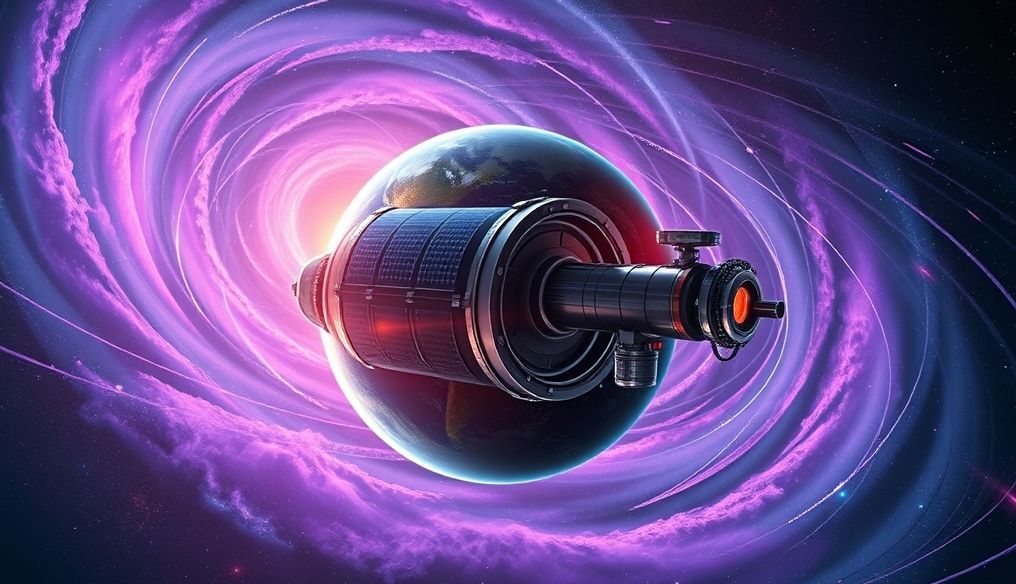Introduction: Nuclear Energy Between Promise and Peril
As concerns about climate change and reliance on fossil fuels grow, nuclear energy has become a focal point as a potential alternative to meet our increasing energy needs. But is it truly a safe and sustainable solution? This article aims to explore this question by analyzing how nuclear energy works, assessing potential risks associated with it, and reviewing recent developments in nuclear safety.
Chapter 1: How Does Nuclear Energy Work?
1.1 Basics of Nuclear Fission
Nuclear energy relies on a process called nuclear fission, in which the nucleus of a heavy atom (usually Uranium-235 or Plutonium-239) is split into two smaller nuclei. This process releases a tremendous amount of energy in the form of heat and radiation.
Example: Imagine a piece of Uranium-235 being bombarded with a neutron. This neutron causes the uranium nucleus to split into two smaller nuclei (such as Barium and Krypton) and releases additional neutrons. These additional neutrons can cause nuclear fission in other uranium atoms, leading to a chain reaction.
1.2 Nuclear Reactor: The Heart of the Plant
The nuclear reactor is the device where the nuclear fission process is controlled. The reactor consists of:
- Nuclear Fuel: Usually in the form of rods made of enriched uranium.
- Moderator: A substance (such as water or graphite) that slows down the movement of neutrons to make them more effective in causing fission.
- Control Rods: Made of materials that absorb neutrons (such as boron or cadmium), and are used to control the rate of the nuclear reaction.
- Coolant: A substance (such as water or gas) used to remove heat generated by nuclear fission.
1.3 Generating Electricity from Nuclear Heat
The heat generated by nuclear fission is used to heat water and convert it into steam. This steam drives turbines connected to electrical generators, which convert mechanical energy into electrical energy.
Note: The process is similar to power plants that run on coal or gas, but the difference lies in the heat source.
Chapter 2: Risks of Nuclear Energy
2.1 Nuclear Accidents: Lessons from History
Nuclear accidents, such as Chernobyl and Fukushima, have highlighted the potential risks associated with nuclear energy. These accidents have caused:
- Widespread radioactive contamination.
- Evacuation of residents from affected areas.
- Long-term health effects on the population.
- Significant economic damage.
Example: The Chernobyl disaster in 1986 was the result of an unsafe experiment that led to a sudden surge in power in the reactor, causing an explosion and fire. This disaster contaminated vast areas of land in Ukraine and Belarus, and caused the deaths of many people.
2.2 Disposal of Nuclear Waste
Nuclear waste is a byproduct of the nuclear fission process and is a radioactive material that remains dangerous for thousands of years. Disposing of this waste is a major challenge, as it must be stored in safe and geologically stable locations to prevent radiation leakage into the environment.
Challenges:
- Finding suitable storage sites.
- Ensuring long-term storage safety.
- Risks of nuclear material proliferation.
2.3 Security Risks: Nuclear Terrorism
Nuclear power plants and nuclear materials can be targets for terrorists. An attack on a nuclear power plant could release large amounts of radiation into the environment, while nuclear materials could be used to make nuclear weapons.
Security Measures:
- Strict protection of nuclear power plants.
- Strict monitoring of nuclear materials.
- International cooperation to combat nuclear terrorism.
Chapter 3: Modern Developments in Nuclear Safety
3.1 Fourth-Generation Reactors
Fourth-generation reactors are new reactor designs aimed at improving safety, efficiency, and sustainability. These designs include:
- Gas-Cooled Reactors: Use gas (such as helium) as a coolant, reducing the risk of meltdown.
- Lead-Cooled Reactors: Use lead as a coolant, providing better radiation protection.
- Molten Salt Reactors: Use molten salt as fuel and coolant, making them safer and more efficient.
3.2 Passive Safety Systems
Passive safety systems are systems that operate automatically without the need for human intervention or external power in the event of an accident. These systems rely on basic laws of physics (such as gravity and heat) to stop the nuclear reaction and prevent radiation leakage.
Examples:
- Automatic fire extinguishing systems.
- Gravity-powered reactor cooling systems.
3.3 Improving Nuclear Waste Management
Research is underway to develop new methods for managing nuclear waste, including:
- Recycling Nuclear Fuel: To extract more energy from the fuel and reduce the volume of waste.
- Vitrification: Converting waste into solid, chemically stable glass.
- Deep Underground Storage: Storing waste in stable geological layers deep underground.
Chapter 4: Nuclear Energy and the Economy
4.1 Cost of Building and Operating Nuclear Power Plants
Building and operating nuclear power plants requires huge capital investments. However, operating costs can be relatively low, as nuclear fuel is relatively cheap compared to fossil fuels.
Factors Affecting Cost:
- Initial construction costs.
- Fuel costs.
- Operating and maintenance costs.
- Waste disposal costs.
4.2 The Role of Nuclear Energy in Providing Jobs
The nuclear energy industry creates jobs in a variety of fields, including engineering, physics, nuclear science, construction, operation, and maintenance.
Statistics: According to the World Nuclear Association, the nuclear energy industry employs more than 450,000 people worldwide.
4.3 Impact of Nuclear Energy on Electricity Prices
Nuclear energy can help stabilize electricity prices, as it is less susceptible to fossil fuel price fluctuations. However, high initial construction costs can affect electricity prices in the short term.
Chapter 5: Nuclear Energy and the Environment
5.1 Greenhouse Gas Emissions
Nuclear energy does not produce greenhouse gas emissions during operation, making it a clean alternative to fossil fuels. However, there are some emissions associated with building nuclear power plants and extracting nuclear fuel.
Comparison with Other Energy Sources:
- Coal: Produces large amounts of greenhouse gases.
- Natural Gas: Produces less than coal, but still contributes to climate change.
- Renewable Energy (Solar and Wind): Produces no greenhouse gas emissions during operation, but depends on weather conditions.
5.2 Impact on Air and Water Quality
Nuclear energy does not pollute air or water during operation, unlike coal or gas-fired power plants. However, radiation leakage from nuclear accidents can pollute the environment.
5.3 Use of Natural Resources
Nuclear energy requires the use of uranium as a fuel source. Uranium is a limited resource, but large quantities are available worldwide. The development of fourth-generation reactors can also reduce reliance on uranium.
Chapter 6: Public Opinion on Nuclear Energy
6.1 Public Perceptions of Risks and Benefits
Public opinion on nuclear energy is often divided. Some see it as a necessary solution to meet growing energy needs and combat climate change, while others fear the potential risks associated with it.
Factors Influencing Public Opinion:
- Nuclear accidents.
- Disposal of nuclear waste.
- Information available to the public.
- Political views.
6.2 The Role of the Media in Shaping Public Opinion
The media plays a crucial role in shaping public opinion about nuclear energy. Extensive media coverage of nuclear accidents can increase public concerns, while positive media coverage of developments in nuclear safety can help improve public opinion.
6.3 Impact of Environmental Movements
Environmental movements play an important role in the debate about nuclear energy. Some environmental movements strongly oppose nuclear energy, while others support it as a temporary solution to combat climate change.
Chapter 7: The Future of Nuclear Energy
7.1 The Role of Nuclear Energy in the Future Energy Mix
Nuclear energy is likely to play an important role in the future energy mix, especially in countries seeking to reduce their reliance on fossil fuels. However, the extent of this role depends on developments in nuclear safety and construction and operating costs.
7.2 Technological Innovations
Technological innovations in nuclear energy, such as fourth-generation reactors and passive safety systems, can make nuclear energy safer, more efficient, and more sustainable.
7.3 Government Policies
Government policies play a crucial role in determining the future of nuclear energy. Governments can encourage investment in nuclear energy by providing financial support and tax incentives, or they can hinder it by imposing strict regulations.
Chapter 8: Conclusion and Recommendations
Nuclear energy represents a complex solution to the global energy crisis. While it provides a clean alternative to fossil fuels and can help combat climate change, it also carries significant risks, such as nuclear accidents and nuclear waste disposal. In order for nuclear energy to be a safe and sustainable part of the future energy mix, steps must be taken to enhance nuclear safety, improve nuclear waste management, and increase transparency and communication with the public.
Recommendations:
- Invest in research and development for fourth-generation reactors and passive safety systems.
- Develop safe and effective methods for managing nuclear waste.
- Increase transparency and communication with the public about nuclear energy.
- International cooperation to enhance nuclear safety and combat nuclear terrorism.




